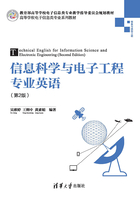
Technical Tips
Baud
In telecommunications and electronics, baud is a measure of the symbol rate, the number of distinct symbol changes made to the transmission medium per second in a digitally modulated signal. The baud (symbol rate) is distinct from the bit rate since one symbol can carry more than one bit of information. In voice band modems, where spectral efficiency is important, it is common for one symbol to carry 3 or more bits. A 3,000 bps modem that transmits symbols that each carries 3 bits should be described as operating at 1,000 baud. Early modems operated at one bit per symbol. Baud and bit rate for those devices were equivalent, leading many to believe the two terms are synonymous. They are not.
DSL
DSL or xDSL is a family of technologies that provide digital data transmission over the wires of a local telephone network. DSL originally stood for digital subscriber loop, although in recent years, many have adopted digital subscriber line as a more marketing-friendly term for the most popular version of consumer-ready DSL, ADSL.
Typically, the download speed of consumer DSL services ranges from 256 kbps to 24,000 kbps, depending on DSL technology, line conditions and service level implemented. Typically, upload speed is lower than download speed for Asymmetric Digital Subscriber Line (ADSL) and equal to download speed for Symmetric Digital Subscriber Line (SDSL).
Rate-distortion theory
Rate-distortion theory addresses the problem of determining the minimal amount of entropy (or information) that should be communicated over a channel, so that the source can be approximately reconstructed at the receiver without exceeding a given distortion. Rate-distortion theory gives theoretical bounds for how much compression can be achieved using lossy data compression methods. Many of the existing audio, speech, image, and video compression techniques have transforms, quantization, and bit-rate allocation procedures based on the general shape of rate-distortion functions.